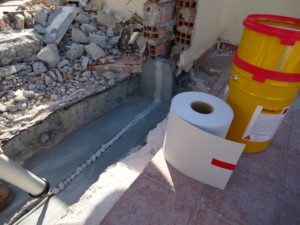
DAMP MITES
Having damp in the home is an aesthetic problem on a visual level. However, it can also lead to a health problem. Above all, due to the possible appearance of damp mites.
If you want to have a safe home, the best thing to do is to start paying attention to these details and learn how to get rid of, as well as avoid, these unwanted guests.
Why it’s important to get rid of these mites
Dust mites, as well as fungi and other bacteria, can thrive in environments where moisture has become a problem. This is often the case in many homes, especially when autumn starts.
The importance of getting rid of these kinds of consequences lies in the fact that they can be harmful to health in the long term. Dust mites, for example, are linked to the development of respiratory diseases such as asthma. They also contribute to the development of allergies.
But they are not only related to respiratory diseases. Their appearance can also lead to reactions such as atopic dermatitis or skin rashes. It is therefore important to put an end to them.
How to remove damp mites?
Now that you know how important it is to put an end to this problem, you are probably wondering how to remove damp mites effectively.
To do so, there are a number of tips you should follow to make your home safer.
Keep your home well ventilated

To eradicate damp mites, one of the most important things to do is to ventilate your home properly.
In addition, the room humidity should be below 50% and the temperature should not exceed 22 degrees Celsius.
Use humidity control devices

Nowadays, there are various devices on the market, such as dehumidifiers and air conditioners, that help to control the humidity in your home.
Sunlight, a good companion

Another tip is to open the windows wide to allow sunlight to filter into the home.
Dust mites are not very friendly to the sun, so the sun can be a great natural ally that will help you nip the problem in the bud without the need to invest.
cleaning

In the event that the damp problem has got out of hand and you already have these unwanted guests in your home, the best solution is to carry out a good cleaning accompanied by an arduous disinfection.
It is best to do this throughout the house, and not just in the infected areas. After that, it is advisable to get rid of all dampness as soon as possible, so that the mites do not reproduce again in those specific areas.
.
Types of damp and the best way to avoid them
As you have seen, dampness inside the home can become a clear problem. To help you eradicate it or prevent it from appearing, you must first know the different types that exist.
Condensation damp
Condensation dampness is that which appears due to the high level of ambient humidity inside the home.
Although it is in a gaseous state, when it reaches areas where it is colder, such as windows, it tends to cool down and turn into a liquid state. An easy way to recognise it is to check that some drops of water appear inside the window as if it had rained.
After the windows, this type of moisture will eventually affect the walls of your home, as well as the construction. In other words, it can end up becoming a health problem.


Rising damp
Rising damp is the damp that develops inside the home due to the absorption of the damp that exists in the floor where it has been built.
When faced with porous materials, the damp rises and seeps through until it creates problems such as the accumulation of salts or the appearance of unsightly stains.
In addition, as with any other type of damp, it could end up affecting the health of the people living inside the home.
How to avoid damp?
To avoid the appearance of the different types of damp, it is essential to have good waterproofing, especially of the walls, as well as proper ventilation of the home.
In addition, it is also necessary to take into account the insulation of the floor, in order to prevent damp from rising upwards, especially when it is caused by capillarity.
In short, if you want to get rid of damp mites, it is essential to get rid of the damp first. To do this, it is necessary to carry out some professional and personalised procedures according to the particular needs of each case.

















